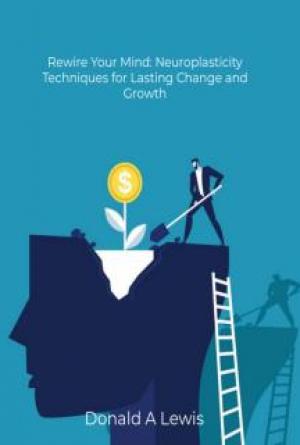Chapter 7: Conclusion
Tools for creating a system
Software

I use Evernote for my system. Why? I have two reasons.
First, I have gone through a ton of different task managers, something that has taught me that a system needs to be simply enough to be used away from the computer. Evernote is just a notepad, which works perfectly for me.
Second, I learned that to successfully complete tasks and projects I need more than just a check list; I need the ability to write and add information to each project as well as think through what my first step should be. Almost all my tasks and projects are full of materials like pictures, recordings, and screenshots, all of which are handled by Evernote.
This program is the electronic version of a notepad that can be used to write a practically endless number of notes. I have inbox, problems, active projects, upcoming projects, goals, ideas, and journal, which we have already talked about.
Evernote has quite a few great features. I most often exploit the ability to send anything I want to the program’s email address by forwarding emails I receive or sending links to sites that catch my eye. I also make audio recordings that usually get a ticket to my ideas folder.
As well, I have a paper version of my Routine System with a bin for documents labeled the same way. I made it to see if I could go without a computer or smartphone, but you can see for yourself what works for you. Either way is fine, though I find it more convenient to work electronically. I like Evernote, but you can use pretty much any program you want.
Calendar
You have already noticed that I do not have a calendar folder, which is because I use Google’s calendar. It works well, sending reminders of upcoming events to my smartphone. I usually do not send events to both my calendar and my upcoming projects folder; tasks and projects without a date are entered in my system, while everything that has a date and time is written in my calendar.
To-do list, or journal
Journal is the section I use to keep a list of things for each day. The main goal I have for sorting everything I have to do is to eventually get them on this list. Almost every morning I quickly look over my active projects, upcoming projects, and problems folders as well as my calendar before drawing up a to-do list for the day.
While many people use daily to-do lists, many projects get stuck on the list day after day. This happens because these lists include many unchecked tasks and projects for which no preparation has been done. We, of course, will be writing our daily to-do lists using already sorted and processed tasks.
A bit about how it all works
Day
Every morning or evening (whatever is more convenient for you) you can write a to-do list for the day. That should happen after looking over your calendar, active projects, problems, and upcoming projects (that last one is up to you; I usually need to check it just once a week). Do not put project names on your list, and instead enter actions like “buy cartridge” or “pay electric bill.”
Week
Go through your inbox about once a week. If you have time, also look through your ideas and decide what to move to your goals, what to put off, and what to forget altogether.
Month
At the beginning of every month, sort through your goals folder.
a) Sort through your new goals folder. Decide the area of your life to which each goal is related.
b) Categorize each area of your life, assigning each the appropriate number.
c) Look at your monthly goals.
a) If some goals have not been achieved, you need to continue working on that aspect of your life.
b) Goals on your list of monthly goals that have been achieved can be moved to your list of completed goals.
c) Decide which area of your life needs your attention this month. Write your new goal (area of your life) in your monthly goals list.
d) Lay out your vision.
e) If you have a vision, look for how to make that aspect of your life become routine. To do so, look through all the ideas you have collected in the folder for that area of your life—one of them may come in handy.
f) If you have a plan for how to make this area of your life become routine, go ahead and move your new project to your active projects list.
Year
At the end of the year, look through your completed goals list. Write out what you have accomplished and frame it—nice work!
Look over the different aspects of your life and think up a plan for what you will begin in January, what you would like to improve in February, and so on. In time you will have clearly defined plans for the year and beyond.
Keeping a finger on your pulse, or avoiding blind spots
Most of my friends live by instinct. That means they accomplish the tasks and projects that happen to grab their attention or about which they are constantly reminded. Generally speaking, that approach leads to problems that occur because it is impossible to have everything you need to do in your head at the same time, and so some important things get caught in your blind spot.
Using the Routine System will help you keep such situations to the minimum, given that you will always have things to do each day, each week, each month, and even larger-scale things that need to be done in six months, a year, or more. Each of those periods can be easily controlled.
Here is how that happens:
1. The goals folder helps you see the big picture, create plans for each year, and have clear monthly plans.
2. The upcoming projects folder helps you avoid unpleasant surprises and keep an eye on the monthly picture and beyond.
3. The active projects folder helps you create an overview of each week.
4. Finally, the journal folder gives you the ability to create daily to-do lists.
Now you have what you need to look over each year, month, week, and day.
Time management and happiness
I once participated in a Christian conference in Denver that included a book fair. I love reading books, so I decided to head over and see if I could find something interesting. As I stood in line I heard someone ask, “They say great books make great people—what do you think, bro?” I would not have been able to answer then, I do not think, but I was almost sure it was true. I collected and read everything I could in an attempt to learn as much as I could about everything, which is why I was sure I had not yet found a good book on time management.
Another time I took an old friend to the airport. He registered and we decided to sit down and talk for a bit about life. As we chatted, the conversation turned to the future, at which point he looked at me and asked, “And what do you want? What would you like to do?”
Honestly, I was stumped, and not at all because I had never asked that question myself. I had often come across it in books on creating one’s mission and setting strategic goals, and I had always wanted to come up with an answer. The problem was most likely elsewhere. First of all, I knew that one deep conversation with an old and close friend was as good as tens of books. Reading a book is one thing, but looking a person in the eye and answering his questions is quite another. Second, we were not talking about what I wanted to do in general; we were talking about what I wanted to do that would make me happy.
Not long before writing this book I happened across an interesting work on TM entitled A Perfect Mess. It included many examples from the lives of different people that the authors used to try to soften the intense infatuation enjoyed by efficiency and order. They talked about situations where both perfect order was ineffective and a bit of chaos and disorder actually led to significant results.
Even before I read that book I had given some thought to the friends who seemed to me to have successful lives even though they did not use any time management systems. What they all had in common was an enjoyment of life, doing things that made them happier.
A few days after the conversation I had with my friend I realized what I wanted. I began thinking and looking for things that would make me feel happier, something that led to many changes in my life. I bought skates and now skate in the park in the evenings after the kids are asleep. I listen to different music and cannot even begin to describe how I feel when I do. It turns out there are art classes for adults close by, and now I cannot wait for the one day each week I head over there. Of course, I read less, but I am happier. Then, sitting in the airport, I understood that time management is useless unless it helps me become a happier person.
I no longer worry that I am not being efficient. Being happy and positive is the best efficiency you can achieve.
Why am I telling you all this? Every time you try to change something in an area of your life, your goal should be not only to achieve a result and make something become routine, but also to become happier.
Conclusion
Like most people, I used to write a list of dreams I had, and the following year I would pull out that list. I was always interested to see what if anything had come true.
After implementing my system I used New Year to write a list, not of what I wanted to happen during the year, but of goals I had achieved. I used my completed goals list to write out 16 points, stunned that after so many years of unsuccessfully chasing after a variety of goals I had accomplished so much in just one. The list was so impressive that I wanted to hang it on the wall, and now I cannot wait for next year.
My system is no panacea or formula for happiness. As a believer I know that true happiness can only be found in God.
With that in mind, think of this book as a tool that can help you become more organized, more consistent, and more goal-oriented.
You will probably not have staggering results right at the start, but do not be disappointed or hurry.
Start with the small things and aim for modest victories, remembering that every time something becomes routine is a small victory that gives you a little more experience, yields yet better results, and rewards you with even more happiness.








